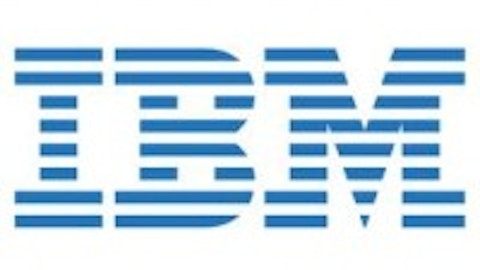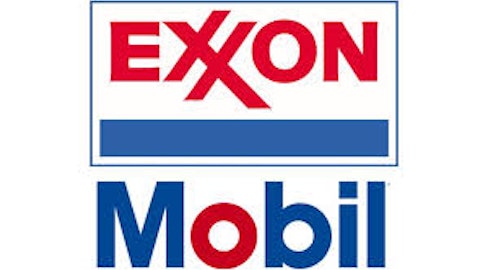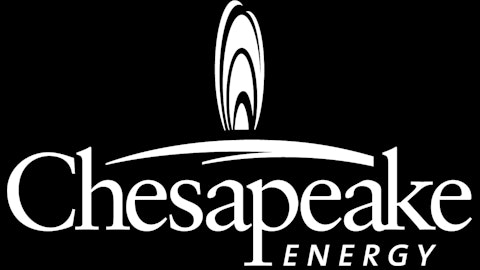The ‘king of oil,’ Exxon Mobil Corporation (NYSE:XOM) has embarked on an aggressive strategy to beef up its unconventional oil assets while divesting itself of low-margin downstream assets. This has been an ongoing project, with the company purchasing 226,000 acres from ConocoPhillips in Athabasca, Canada for $720 million. Despite Exxon Mobil Corporation (NYSE:XOM)’s recent poor financial results, this purchase, along with a range of other emerging catalysts, has the potential to catapult Exxon Mobil Corporation (NYSE:XOM)’s share price higher over the long term.
Exxon’s second quarter results were disappointing
For the second quarter of 2013, Exxon reported some particularly disappointing results for investors. The company’s revenue fell by 12% to $96 billion, while its bottom line plunged by 57% year over year to $6.9 billion. Softer crude prices, lower production volumes and weaker refining margins all affected Exxon’s earnings. A huge contributing factor to this decline was a $7.5 billion gain from divestments and tax related items in the second quarter of 2012, despite the one-of items, earnings still declined by 19%

Production and reserves are expected to grow
It is expected that Exxon Mobil Corporation (NYSE:XOM) will be able to strengthen its financial performance through the remainder of 2013, with production and reserves both expected to grow. This production growth will primarily be derived from its unconventional Kearl oil sands project in Alberta, Canada, which commenced operations in April 2013.
This project is expected to contribute additional production of 110,000 barrels of oil per day, which is a 10 percent increase on Exxon’s second quarter 2013 daily production. It is also expected that production at this operation should double by the end of 2015. All of which further lift production and boost Exxon’s revenue.
Recent acquisition of the Clyden oil sands project will boost reserves
Oil sands projects have fallen into decline over the last year because of the high cost of development and increasing competition from cheaper sources of crude. Oil sands production typically offers lower margins on each barrel of oil produced in comparison to conventional oil production. But Exxon Mobil Corporation (NYSE:XOM) has been moving ahead with boosting its unconventional oil presence in Canada.
Exxon recently sealed a deal with ConocoPhilips to purchase its interest in the Clyden oil sands project in Alberta, Canada. As a result Exxon has acquired 226,000 acres of undeveloped land, roughly 93 miles south of Fort McMurray, Alberta for around $720 million. Upon closure of the deal Exxon will own a 72.5% interest in the land through its subsidiary Exxon Canada; Imperial Oil, which is 70% owned by Exxon, will own the remainder.
This acquisition is a natural fit with Exxon’s Kearl oil sands project also located in Alberta and may generate some synergies, reducing the overall cost of development and eventually production. It will also boost Exxon’s oil reserves and, once development has been completed, further boost production.
Exxon is undervalued
Savvy investors love Exxon because its size and dominant market position make it incredibly resilient to market corrections. Obviously there will be downswings in its value, but historically Exxon Mobil Corporation (NYSE:XOM) has recovered from these while continuing to reward patient investors with a consistently growing dividend.
The best ratios for investors to use when making a comparative valuation of integrated oil majors are enterprise value-to-EBIDTA and enterprise value to proved oil reserves. These allow investors to make an apples-to-apples comparison, and as the table below illustrates Exxon does appear cheap in comparison to its peers, with an enterprise value of six times EBITDA and 16 times its proved reserves.
| Company | Enterprise-value to EBITDA | Enterprise-value to Proved Oil Reserves. |
|---|---|---|
| Exxon | 6 | 16 |
| Chevron | 5 | 21 |
| BP | 6 | 9 |
Source data: Exxon, Chevron and BP 2Q13 Financial Filings.



